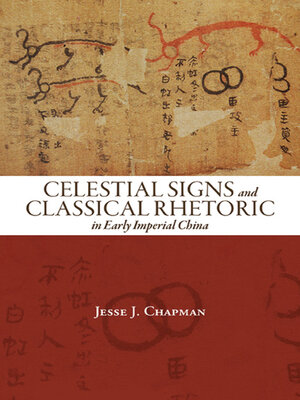Celestial Signs and Classical Rhetoric in Early Imperial China
ebook ∣ SUNY Series in Chinese Philosophy and Culture
By Jesse J. Chapman

Sign up to save your library
With an OverDrive account, you can save your favorite libraries for at-a-glance information about availability. Find out more about OverDrive accounts.
Find this title in Libby, the library reading app by OverDrive.



Search for a digital library with this title
Title found at these libraries:
| Library Name | Distance |
|---|---|
| Loading... |
Considers how sign-reading fit into broader understandings of the human and cosmic worlds in Han times.
Celestial Signs and Classical Rhetoric in Early Imperial China considers how the reading of celestial signs-including comets, strange clouds, halos, rainbows, and planets in retrograde motion-fit into broader understandings of the human and cosmic worlds in Han times. Advancing a cultural studies approach to celestial signs, Jesse J. Chapman traces the theory and practice of sign-reading across a range of genres, including technical manuals, historical narratives, and memorials to the throne. Moving from variegated materials in an early tomb to historical treatises compiled over several centuries, Chapman demonstrates that rhetoric and ideals drawn from classical texts gradually became fundamental sources of authority for interpreters of celestial signs. Sign-reading in practice proved both flexible and context-dependent, and interpreters of celestial signs rarely, if ever, read omens in isolation. Celestial signs became meaningful in the context of historical understanding, personal experience, the state of the empire, and the life of the court. Reading omens meant reading the state of the world at a particular moment in time.







